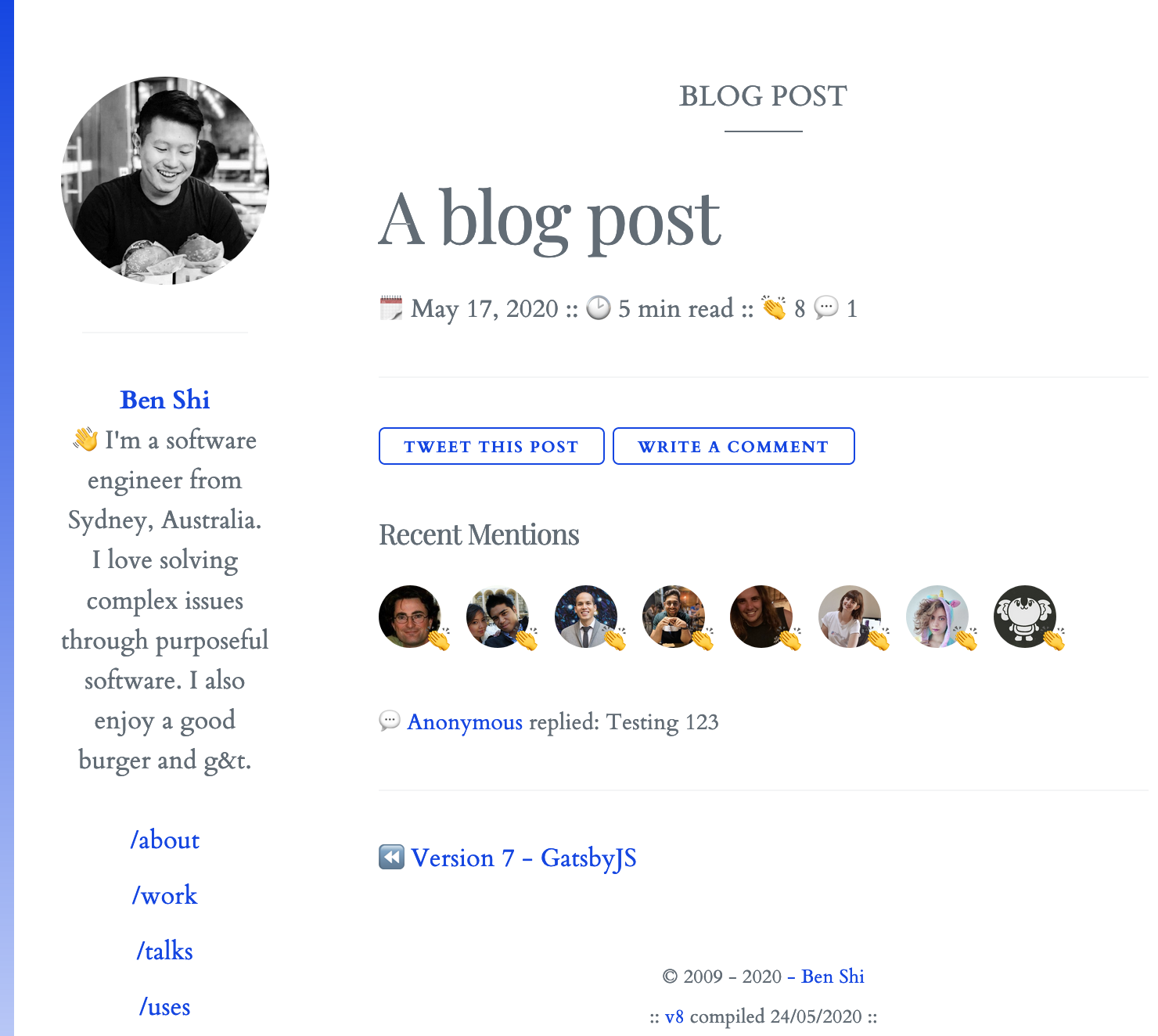A Brief Look at WebMention
I’ve been looking for the perfect commenting solution for my blog in the last few weeks. After trialing various solutions to no avail, I stumbled into the world of IndieWeb and in particular Webmention. This is a two part series, in the first I will go in to some details on what webmention is, how it works and what some benefits you may get over and above existing solutions. In the second I will go into how I went about implementing it.
Why existing solutions didn’t work?
First, I want to talk about how existing solutions like disqus, isso, utterance, commento and many others didn’t quite fit what I needed.
1. Privacy
One of the most popular commenting solution out there is Disqus and it is usually the first solution people recommend due to how complete it is. But then how can disqus provide such a service and all of its features for free? There is a famous saying “if you’re not paying for the product, you are the product”, this holds true there. While Disqus do have a paid tier, their revenue model is predominately ads and analytics. So would be a no from me, as I wanted to respect the privacy of all visitors on my website, the same reason why you won’t find Google Analytics on my website.
2. Entry Barrier for Interacting
Many solutions require the reader to sign in before interacting such as a medium account before giving a clap to a medium article. Solutions like staticman and utterance require a github account for users to leave a comment. These “barriers” creates friction and its not something I want for a niche blog like mine. Social login such as google, facebook and twitter are more widely available since most people would have at least one of the above and they are supported on many of the commenting solutions out there. But since privacy is a concern of mine, facebook and google logins are out. Twitter is somewhat more acceptable amongst the tech community.
3. Ease of setup
Isso and Commento are popular alternatives to Disqus, they are super lightweight and respects your privacy and data. However they do require manual setup and a server to run on since they are self-hosted solutions. Since I’ve only just decommission all my servers, spinning up another is not something I would like to entertain. Having said that if you are already running your own server the two optioned mentioned here are great options.
4. Cost
Cost, it all comes down to money at the end of the day. While I would love to pay for it and support the developers on those projects, I find it super difficult to justify it for my low traffic personal website whether it be hosting it on my own server or paying $5 a month for a commenting service like commento.
5. Theme
Last area of consideration is theming. I’ve decided to implement a theme switcher on the website, which means the comment section needs to be switch themes. From all of the solutions I’ve tested none of them blended into my website’s stylesheet natively without heavily reliant on some javascript magic to manipulate the dom and add in the style or classes. This is due to how majority of them injects an iframe into the page after the page has loaded.
Webmention
The idea haas been around for some time check out the W3C spec, I personally have not heard of it until I eventually stumbled upon webmention from swyx and subsequently Max Bock. Their implementations really grabbed my attention so I decided to dive further.
Let’s start with a little overview webmention, directly from the IndieWeb wiki.
Webmention is a web standard for mentions and conversations across the web, a powerful building block that is used for a growing federated network of comments, likes, reposts, and other rich interactions across the decentralized social web.
This means, no single service owns the data and your interactions are stored on various services waiting to be aggregated such as twitter, mastodon and any other blogs/websites. If you are reading this article then you may have noticed my webmention implementation already, if not then here is a screenshot of it in action!
For my website, I have “claps” which gets fetched directly from twitter. Any tweets with my blog links on it that receives likes will show up here because my website implements webmention protocol.
The recent mentions section shows who has liked the post and comments. Because of the federated nature of webmention, comments can also come from multiple sources. In my case, “mentions” are a combination of twitter replies and direct comments hosted off on another service called comment parade which allows no signup comments! Another benefit of webmention is that traditional pingbacks from other websites can also be converted into webmention and displayed as mention.
Obviously implementing it yourself takes time but you get much more flexibility in terms of:
- source the reactions - twitter, where I spend most of my time online
- theming - my recent comments fits right into all four of my website theme options.
- cost - free as in beer!
Great! How can I go about implementing it?
One thing to note before you start implementing webmention is that you can fetch the mentions at build time or during runtime (via the client). Both approaches have tradeoffs, it worth understanding them before diving in the deep end and implementing your own.
If you have a high traffic website and you want the page to load quickly then you can opt for a build-time approach. The obvious tradeoff here is that your webmentions will only be updated whenever you publish an update. If you want your webmentions to be updated more often, then you would have to trigger your builds more regularly. This can be achieved in a few different ways, either by a schedule or a webhook that triggers a build whenever a interaction or mention is observed. Those approach offers a good trade off between performance and freshness of your webmention.
The other approach is to fetch the webmentions at run-time on the client. This adds additional overhead to your website, as it needs to make more http calls. What you do get with the additional performance hit is that your website’s mentions will always receive the latest interactions. This may be acceptable on a lower traffic websites like mine.
So hopefully by now, you have a good understanding of webmention and some of the advantages it brings. In part 2, I will be going through how I have implemented webmention, along with lots of resources so you can get started too! Stay Tuned (I promise it won’t be a 2 year wait like my Gatsby post).



Have thoughts on this post? Leave a comment